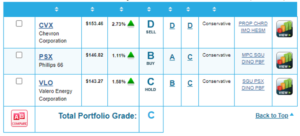Producer Prices Index: Unearthing Sticky Inflation
The market has been hit hard once again, this time by the latest Producer Price Index (PPI) report. January’s PPI numbers have taken Wall Street by storm, confirming that inflation is becoming rather sticky. The fear is that the Federal Reserve may delay its anticipated rate cut if the inflation data continues to show a strong upward trend.
Just like Tuesday’s hot Consumer Price Index (CPI) report, today’s PPI data is not providing the relief that investors were hoping for. The PPI exceeded expectations, delivering a 0.3% rise for the month, the largest increase since August. Core PPI, excluding food and energy, surged 0.5%, far exceeding the anticipated 0.1% gain. This stubborn inflation data is sending Wall Street into a tailspin, as it is clear that the Federal Reserve’s rate-cut decisions are dependent on this pivotal information.
These reports are a far cry from the initial expectations for a flurry of rate cuts in 2024, and with the inflation data proving to be unyielding, it seems these cuts are further from reality. As a result, portfolios built on these anticipated cuts should proceed with caution in the current climate.
Red Sea Dilemma: Implications for Consumer Goods
The ongoing Red Sea conflict is turning into a headache for global commerce, with Houthi rebel missile strikes on ships causing disruptions to one of the world’s busiest trade routes. The Red Sea represents a crucial conduit for trade connecting Europe and the East and is an essential passageway for trade. With about 12% of global trade relying on the Suez Canal, the recent attacks have raised concerns about the future of shipping and consumer goods prices. Shipping costs have already skyrocketed on the affected routes, leading to potential price impacts on consumer goods if the situation persists. The prospect of disrupted global goods inflation poses a substantial risk and challenges the fight against inflation.
Oil Market: A Promising Trade Opportunity
The oil market has been gaining momentum, with legendary investor Louis Navellier bullish on the potential for a strong energy trade. As supply shocks loom and demand rises, the outlook for energy stocks appears positive. With energy stocks primed to benefit from increased demand in the spring and a tightened inventory for refined products, this sector is attracting considerable attention. While specific stock names are reserved for subscribers, Louis offers a free Portfolio Grader tool, enabling investors to evaluate the earnings strength of potential stock picks based on essential fundamental factors. This tool provides investors with an insight into the market, reflecting Louis’s quantitative investment approach.
The market is thrumming with activity, and investors need to keep an eye on these critical developments that are reshaping the investing landscape.
Looming Uncertainty for US Consumer & Energy Stocks

Phillips 66 is the only one with an active “buy” status today.
To take the Portfolio Grader for a test drive, just click here.
Consumer Woes and Market Fallout
Yesterday, we learned that consumer spending fell hard in January, signaling cracks in the “resilient” U.S. consumer.
From CNBC:
Advance retail sales declined 0.8% for the month following a downwardly revised 0.4% gain in December, according to the Census Bureau.
A decrease had been expected: Economists surveyed by Dow Jones were looking for a drop of 0.3%, in part to make up for seasonal distortions that probably boosted December’s number.
However, the pullback was considerably more than anticipated. Even excluding autos, sales dropped 0.6%, well below the estimate for a 0.2% gain.
Here’s Louis’ perspective from yesterday’s Growth Investor Special Market Update podcast:
The retail sales report was very disappointing. It was weak across the board.
The only thing that was really up was furniture sales and spending at bars and restaurants…
Clearly, consumers spent too much during the holidays…
Now, it wasn’t all bad. In today’s upside-down market, the silver lining of weaker consumer spending is that it gives the Fed some data supportive of a rate cut.
Back to Louis:
The disastrous January retail sales report will cause a lot of downward GDP revisions.
Don’t let that bother you, because it will just make the Fed consider cutting rates sooner than later.
Debt Dilemma and the Fed’s Choice
According to TransUnion, credit card balances jumped 10% from one year ago. The average balance sits at $6,360, which is the highest it’s ever been.
Now, that alone isn’t huge cause for concern. Part of this elevated figure reflects inflation.
The more concerning aspect is how more Americans are unable to pay off their balances each month.
Back to CNBC:
…Households continue to show signs of strain — more cardholders are carrying debt from month to month or falling behind on payments.
Credit card delinquency rates jumped across the board, the New York Fed and TransUnion found. Credit card delinquencies surged more than 50% in 2023, the New York Fed reported.
According to TransUnion’s research, “serious delinquencies,” or those 90 days or more past due, reached the highest level since 2009.
“Consumers are struggling with their payments,” Wise said. “I think we will continue to see those delinquencies tick up.”
Now, as Louis noted, this could accelerate the timing of the Fed’s first interest rate cut. But as it stands today, this has all the makings of a photo finish…
Will the U.S. consumer be able to hold out until the Fed lowers interest rates, taking pressure off nosebleed credit card interest rates and balances, as well as squeezed household budgets?
Or will more sticky inflation data mean the Fed doesn’t cut rates anytime soon, which causes consumers to tap out and stop spending later this year, dashing hopes of a soft landing?
Based on this week’s inflation data, it’s looking neck-and-neck.
We’ll keep you updated on all these stories here in the Digest.
Have a good evening,
Jeff Remsburg






